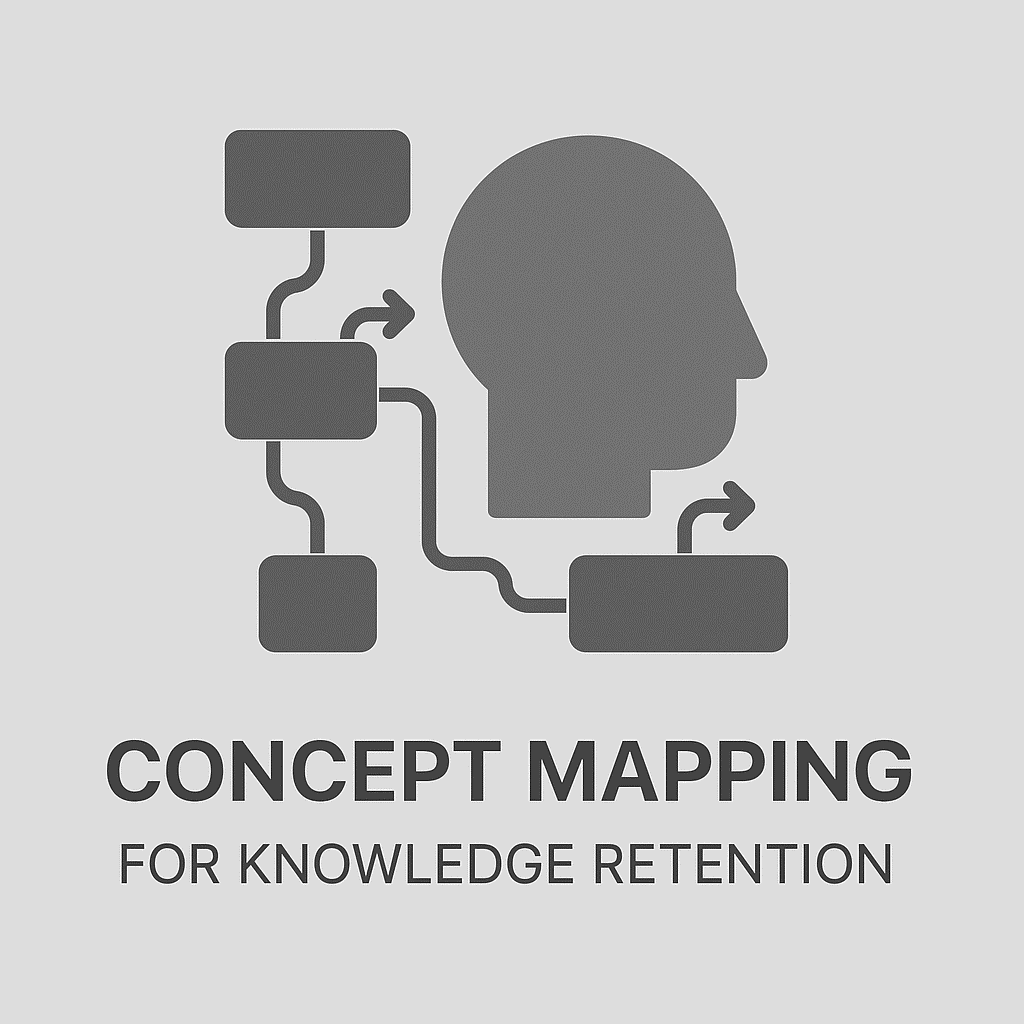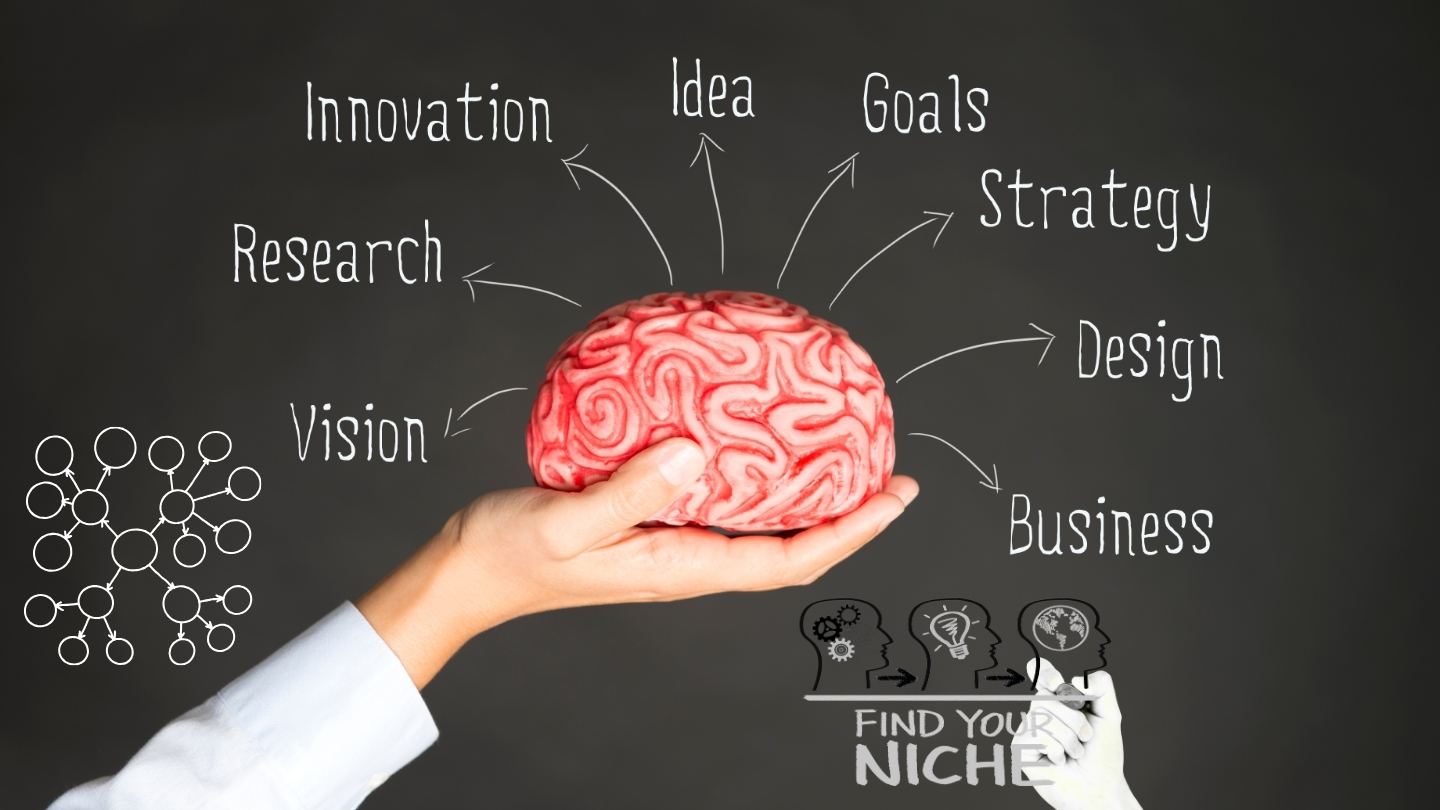
Why and How Concept Mapping Helps Retain Knowledge
A straightforward reason learners forget
Most notes capture facts without showing how the pieces fit. Concept mapping solves that gap. You place key ideas on a page, connect them with labeled links, and build a visible network. Each label states a relationship—requires, causes, converts to, is evidence for. That change turns passive reading into active meaning-making, which helps knowledge stick for the long haul.
In practice, the breakthrough often happens when a learner writes a precise link label. The moment a student shifts from a vague line to “X inhibits Y,” confusion starts to clear. Choosing a verb pushes the brain to explain the idea, not copy it.
Table of Content
- Why and How Concept Mapping Helps Retain Knowledge
- What a concept map is—and what it is not
- Why concept mapping boosts knowledge retention
- A practical method you can use today
- An efficient 15-minute study loop
- Quality matters: a simple scoring rubric
- Common mistakes—and quick fixes
- Concept mapping for learning: use cases that work
- Anecdotes from practice
- Pair concept mapping with proven methods
- Troubleshooting guide
- Key takeaways
- Conclusion
- FAQs
What a concept map is—and what it is not
A concept map is a diagram of concepts (nodes) connected by labeled relationships (links). Labels form propositions—concise statements that carry meaning, such as “photosynthesis requires light.” The arrangement is hierarchical: general ideas at the top, specifics below, with cross-links that connect branches.
A mind map uses a radial layout for brainstorming. It may skip labels and focus on associations. Mind maps help with idea generation. Concept maps help with learning, assessment, and knowledge retention because labeled links make understanding testable and teachable.

Why concept mapping boosts knowledge retention
1) It builds schemas you can recall under stress
Schemas are organized memory structures. When you sort ideas from general to specific and draw cross-links, you create a structure your memory can find later. This helps on exams and in problem solving where you need to move across topics quickly.
2) It taps dual coding (words + space)
Maps mix language and spatial layout. That gives you two routes back to the same idea: a verbal cue from the label and a spatial cue from the diagram. Two paths help retrieval when pressure is high.
3) It reduces load that gets in the way
Working memory has limits. A dense page of notes raises extraneous load. A good map clusters related ideas, making it easier to focus on meaning. With lower noise, more capacity is available for building understanding.
4) It triggers generative learning and self-explanation
Choosing a link label forces you to explain the relationship to yourself. That act—self-explanation—drives durable understanding. Concept maps are a natural vehicle for that kind of thinking.
5) It pairs well with retrieval practice and spacing
Retrieval practice—closing the material and recalling it—often produces larger gains on delayed tests than elaborative study alone. Strong study plans combine mapping with retrieval and spaced review across days and weeks.
A practical method you can use today
Step 1 — Set a sharp focus question
Place a single question at the top of the page.
Examples:
-
How does negative feedback maintain homeostasis
-
What drives inflationary pressure in a small open economy
-
How do constraints shape ecosystem stability
The focus question acts like a filter. Every node and link must answer it.
Step 2 — Harvest candidate concepts
List 20–40 terms from your reading or lecture.
Favor:
-
Processes such as glycolysis or osmosis
-
Causes and constraints such as resource limits or regulation
-
Evidence such as key studies or diagnostic tests
-
Outcomes such as equilibrium or symptom relief
Mark the 10–15 that matter most for your question.
Step 3 — Arrange a clean hierarchy
Place the most general ideas in the top layer. Cascade supporting concepts below. Keep branches readable with four to seven nodes per level. If a branch balloons, split it onto a second map.
Step 4 — Write labeled links as short propositions
Draw a link only when you can supply a label. Use simple verbs and phrases:
-
requires, causes, constrains, leads to
-
consists of, triggers, inhibits, converts to
-
is evidence for, is explained by, contrasts with
If the label feels vague, return to the source or ask a peer. Precision in labels is where learning happens.
Step 5 — Add cross-links and examples
Cross-links connect branches that usually sit apart. In physiology, thermoregulation and enzyme kinetics might link through temperature effects on reaction rate. Add concrete examples at leaf nodes to ground abstractions.
Step 6 — Pair with retrieval practice
Close the map. Write a five-minute summary from memory. Redraw the key branch without looking. Compare with the original, mark weak areas, and fix them next session. Spaced reviews on Day 1, Day 3, Day 7, and Day 21 turn this into long-term knowledge.
An efficient 15-minute study loop
-
Map a subsection for seven minutes.
-
Free-write a short explanation for three minutes with the map closed.
-
Redraw the branch from memory for three minutes.
-
Mark uncertain links with a dot and clarify them next time.
This loop scales across a semester. It trades long rereads for compact cycles that build retention.
Quality matters: a simple scoring rubric
Use four dimensions with quick point ranges. This keeps grading fast and feedback clear.
-
Valid propositions: link labels are accurate and meaningful
-
Hierarchy: general-to-specific structure is clear and balanced
-
Cross-links: connections across branches show integration
-
Examples and evidence: concrete cases or data at leaf nodes
Rubrics like this support reliable scoring and reveal misconceptions worth teaching into.
Common mistakes—and quick fixes
-
Unlabeled lines → add verbs. A line without a label adds clutter
-
Flat lists → rank concepts by generality and add depth before width
-
Overcrowded canvases → split large topics into a set of modular maps
-
Decorative arrows → keep only links that answer the focus question
-
No retrieval follow-up → add write-from-memory and redraw cycles
Concept mapping for learning: use cases that work
Exam preparation
Map a chapter into two to four layers. Schedule redraws across weeks. Before each review, explain the topic from memory on a blank page. Many students report calmer exams once they can see the structure they built.
Lecture and lesson design
Map objectives, key concepts, activities, and assessments. If an activity does not connect to a target proposition, revise or remove it. The map helps a teacher keep every task aligned with learning goals.
Clinical reasoning in health programs
Create a path from symptoms to pathophysiology to tests to interventions. Ask learners to label links with diagnostic logic: predicts, rules out, suggests. Programs report gains in conceptual understanding and feedback quality when mapping is integrated into case work.
Engineering and natural sciences
Map system components and constraints. Add cross-links that capture feedback or trade-offs. Classrooms that use mapping in labs and design reports often see clearer explanations and fewer missing steps.
Literature reviews and research synthesis
Map theories, methods, findings, and gaps across sources. Link claims to evidence. Cross-links highlight tensions and unanswered questions worth exploring in the write-up.
Workplace learning and onboarding
For a new role or project, map stakeholders, constraints, milestones, and risks. New teammates learn faster when they can view dependencies at a glance.
Anecdotes from practice
A first-year biology class
Students arrived with heavy highlighters and light understanding. The course replaced rereads with a weekly mapping cycle. A student shifted from a low first quiz to a solid second quiz after refining link labels such as “oxygen accepts electrons at the end of the chain.” Precision in one verb pulled oxidative phosphorylation into focus.
A nursing cohort on clinical rotations
Learners built maps around a single patient case. Each map linked symptoms to mechanisms and tests to decisions. Feedback became faster and clearer. Instead of “you missed it,” instructors pointed to a missing label or a weak branch. The mapping habit later helped during handovers.
A teacher-prep seminar
Pre-service teachers mapped a lesson plan and then peer-reviewed. One rule: suggest one change to a link label, backed by evidence. The exercise raised precision and surfaced gaps between objectives and assessments that had slipped through in prose.
Pair concept mapping with proven methods
Retrieval practice protocol
Use short, frequent recall checks. Map a segment, close your notes, explain the idea from memory, sketch a mini-map, then compare against the original. This pairing preserves insight and recall.
Spacing schedules you can keep
Pick a default cadence for each topic: Day 0 for build, then Day 1, Day 3, Day 7, and Day 21. Keep sessions short. Even five minutes of redraw on Day 21 helps.
Worked examples with fading
Start with instructor-modeled mini-maps. Provide core nodes and a few link labels. Over time, remove supports and ask learners to supply labels, then nodes. Fading like this lowers load for novices and builds independence.
Troubleshooting guide
My map keeps turning into a poster
Shrink the scope. Map one process per page. Add a simple legend for link types if needed.
I’m stuck on labels
Keep a verb bank nearby. Examples: requires, causes, constrains, predicts, is evidence for, converts to, prevents, depends on, implies. Start with one and refine later.
I forget the map a week later
Add recall cycles on fixed dates. Redraw from memory before opening your old version. Short sessions and steady intervals work better than long cramming sessions.
My group disagrees on links
Debate the verb and ask for a source. Differences reveal where reading or reasoning needs another pass.
Software or paper
Use paper for early drafts. Move to software once the structure settles or collaboration begins. Choose the medium that keeps labels legible and the layout simple.
Key takeaways
-
Concept mapping turns isolated notes into a connected network with labeled links
-
Gains in learning appear across subjects, with STEM and health programs showing strong classroom use
-
Pair mapping with retrieval practice and spaced review for retention that holds over time
-
A simple rubric—propositions, hierarchy, cross-links, examples—keeps feedback fast and fair
-
Short study loops beat long rereads: map, recall, redraw, repeat
Conclusion
Concept mapping is a practical way to learn complex material without drowning in highlights and dense notes. It gives structure, reveals gaps, and makes revision sessions short and productive. Add retrieval and spacing, and you have a study system that respects time and builds memory you can rely on.
FAQs
Is concept mapping better than flashcards
Different tool, different job. Maps reveal relationships and structure. Flashcards target facts and definitions. Many learners build a map for structure and use cards for quick drills. The two work well together.
How many nodes should a map contain
Enough to tell the story without clutter. A common range is 20–40 nodes for a chapter-level map, with three to five general ideas at the top and specific examples near the bottom.
How often should I review a map
Use a simple spacing plan. After you first build it, revisit on Day 1, Day 3, Day 7, and Day 21. Keep sessions short. Redraw from memory before checking the original.
Do I need special software
Paper is fine for first drafts. Switch to software when you want version control or collaboration. Pick a tool that keeps labels readable and layout tidy.
What proves a good concept map
Accurate propositions, clear hierarchy, meaningful cross-links, and concrete examples. If the labels read like short true or false statements, the map is on the right track.
Learning Skills


